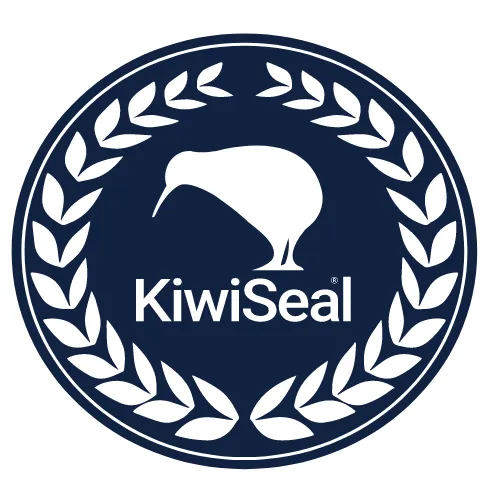How Kiwiseal Applies Roof Coating Paint in 2025
How Kiwiseal Applies Roof Coating Paint in 2025: Our Proven Method
At Kiwiseal, roof coating paint isn’t a quick cosmetic fix—it’s a building envelope upgrade. We specify coating systems that form a seamless, flexible, watertight membrane, extend roof life, and can lower cooling demand on sun-exposed surfaces. Below is exactly how we assess, specify, install, and maintain coatings so they perform for the long haul.

When Kiwiseal Recommends Roof Coating Paint
We recommend coating when the roof deck is sound but weathered, seams or flashings need attention, or the goal is to defer a costly reroof. Coatings are ideal for metal, concrete and clay tiles, and certain membrane roofs, provided preparation and detailing are done correctly. If we find structural failures or saturated insulation, we repair those first before any coating goes down.
The Kiwiseal Process (Start to Finish)
1) Diagnostic Assessment
Full roof condition survey: leaks, rust, open seams, degraded flashing, ponding areas.
Moisture and substrate checks to confirm the roof is a good candidate for coating.
Written scope that clarifies repair items, system build, and timeline.
2) Precision Preparation
Deep clean to remove chalking, moss, and contaminants; dry-down verified.
Targeted repairs: replace fasteners, treat corrosion, reset loose tiles, resecure flashings.
Primers selected per substrate so the coating bonds as designed.
3) System Specification (No Guesswork)
We match chemistry to conditions—not the other way around:
Acrylic for pitched roofs with high UV and minimal ponding; easy to maintain.
Silicone where ponding water and intense UV demand top-tier waterproofing.
Polyurethane for high-traffic or chemically demanding zones.
Elastomeric detailing compounds to bridge movement at seams, penetrations, and terminations.
Each spec includes film-thickness targets, reinforcement at stress points, and color/reflectance as required.
4) Professional Application
Detail first: penetrations, laps, fasteners, edges, parapets—reinforced and sealed.
Field coats applied in multiple passes to achieve the total dry film thickness.
Cross-direction coats for uniform coverage; wet-film checks recorded as QA.
5) Curing, Weather Windows, and Quality Control
Work is scheduled around temperature, humidity, and dew point to prevent blushing or wash-off.
Adhesion checks, holiday (pin-hole) inspections, and ponding reviews completed before sign-off.
Defects, if found, are corrected immediately and re-checked.
6) Handover and Aftercare
You receive system data sheets, warranty terms, maintenance checklist, and service log.
Typical workmanship and product warranty starts at 10 years when installed and maintained to spec.
What We Use—and Why
Acrylic roof coating paint: UV-tough, cost-effective, and suited to sloped profiles.
Silicone roof coating paint: Excellent ponding tolerance and color stability on low-slope areas.
Polyurethane roof coating paint: Highest abrasion and chemical resistance; great near plant or high-traffic zones.
Low-VOC options: Available where indoor air quality and sustainability are priorities.
Compatibility highlights:
Metal roofs benefit from corrosion treatment plus coating; tile roofs gain weatherproofing and UV defence; certain membranes require primers and fabric-reinforced details for long-term success.
Drying and Curing Timelines (What We Plan Around)
Acrylic: commonly touch-dry in ~2–4 hours; full cure often 3–7 days.
Silicone: typically tack-free ~4–8 hours; full cure ~7–14 days.
Polyurethane: often 6–12 hours to dry; ~7–14 days to cure.
Actual times depend on temperature, humidity, and film thickness. We follow the product data sheet, not generic rules.
Costs and Value with Kiwiseal
Installed coating systems: often $25–$50 per m², depending on prep, detailing, access, and chemistry.
Compared with reroofing: coatings frequently come in at about one-third the price of replacement when the deck is sound.
Service life extension: commonly 10–15 years with proper prep and maintenance.
Energy impact: reflective finishes can reduce roof surface temperatures and ease cooling loads on sun-exposed buildings.
For many clients, that combination—lower upfront cost, extended life, and reduced leak risk—delivers a compelling return.
Maintenance the Kiwiseal Way
Inspect twice a year and after major storms: look for debris, ponding, lifted edges, or new interior stains.
Keep it clean: clear gutters and drains; remove leaves and growth that trap moisture.
Fix small issues fast: patch punctures and re-seal details with compatible materials.
Document everything: dates, actions, and service invoices keep warranties valid and aid resale.
Plan a maintenance coat roughly every 8–12 years, depending on exposure and use.
Pitfalls We Prevent
Coating over damp or contaminated substrates
Skipping primers or mixing incompatible chemistries
Under- or over-applying film thickness
Ignoring movement joints, fasteners, edges, and penetrations
Our specifications, QA checks, and crew training exist to eliminate these failure points.
The Bottom Line
Kiwiseal’s approach to roof coating paint is simple: diagnose first, specify precisely, install meticulously, and maintain proactively. Done this way, coating is a practical, lower-cost path to a longer-lasting, watertight, and more efficient roof—without the disruption of a full replacement.






Facebook
Instagram